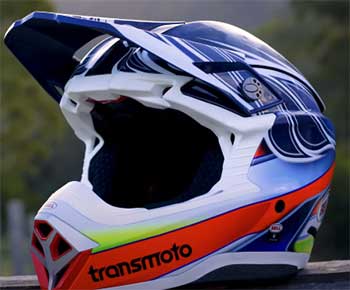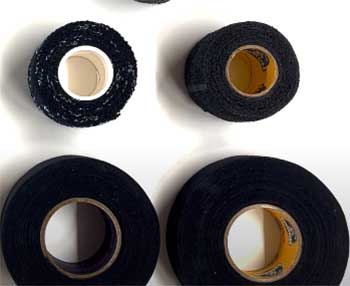If you’re an adrenaline junkie, there’s a good chance you’re also a fan of motorbiking. And if you’ve been in the game for a while, you’re probably familiar with the age-old debate: Bell Moto-9 MIPS or Flex?
Which helmet is the one that’ll truly safeguard your precious noggin?
Let’s dive in and unravel the features, pros, and cons of both to help you make an informed decision.
A Brief Comparison Table
| Feature | Bell Moto-9 MIPS | Bell Moto-9 Flex |
| Protection Technology | Multi-Directional Impact Protection System (MIPS) | Three-layer impact liner (Flex) |
| Weight | Approximately 1450 grams | Approximately 1455 grams |
| Ventilation | Velocity Flow Ventilation system | Similar ventilation, enhanced by adaptive materials |
| Comfort | Removable, washable X-Static XT2 silver liner | Segmented liner that molds to the rider’s head |
| Maintenance | Simpler due to single-layer design | Slightly more complex due to three-layer design |
| Price | Generally higher due to premium MIPS technology | Generally lower, but varies by retailer and region |
| Temperature Regulation | Standard | Adaptive materials assist in temperature regulation |
Unraveling the Bell Moto-9 MIPS

The Bell Moto-9 MIPS, an advanced helmet designed for off-road biking, has won accolades for its quality construction and remarkable features.
MIPS, or Multi-Directional Impact Protection System, is a leading technology incorporated into the helmet design to reduce rotational forces that could be transferred to the rider’s brain during certain impacts.
Pros of Bell Moto-9 MIPS
- Safety Assurance: The MIPS technology is a major pro, providing excellent protection against rotational injuries during crashes. It’s built to absorb shock and protect the rider’s brain from potential harm.
- Ventilation: With an excellent ventilation system, the Moto-9 MIPS keeps riders cool during intense rides. The Velocity Flow Ventilation system channels fresh air to the rider’s head, reducing overheating and discomfort.
- Comfort: A removable, washable X-Static XT2 silver liner provides a great fit and ongoing comfort, ensuring riders can focus on the ride rather than adjusting their helmet.
Cons of Bell Moto-9 MIPS
- Weight: Weighing in at about 1450 grams, some riders find the Moto-9 MIPS to be slightly heavy, especially during extended rides.
- Price: The MIPS technology comes at a premium, making the Moto-9 MIPS a bit pricier than some competitors.
Exploring the Bell Moto-9 Flex
The Bell Moto-9 Flex, on the other hand, boasts the Flex technology, a unique, three-layer impact liner designed to manage energy from three potential crash scenarios: low, mid, and high-speed impacts.
Pros of Bell Moto-9 Flex

- Revolutionary Protection: The Flex technology delivers comprehensive protection across a range of potential impacts, earning it top marks for safety.
- Adaptive Fit: The segmented construction of the liner adapts and molds to the rider’s head for a superior fit, enhancing comfort and stability.
- Temperature Regulation: The Flex helmet materials exhibit adaptive properties that help in temperature regulation, providing coolness in hot conditions and insulation in cold environments.
Cons of Bell Moto-9 Flex
- Complex Design: Some users find the three-layer design of the Flex helmet to be a bit complicated, especially when it comes to cleaning and maintenance.
- Heavier: The Moto-9 Flex is slightly heavier than the MIPS, tipping the scales at around 1455 grams. This might be a deal-breaker for riders who prioritize a lightweight feel.
Also Read: Differences Between Smith Nexus And Vantage MIPS Helmets.
Key Differences Between Bell Moto-9 MIPS and Flex
Despite their similarities, the Bell Moto-9 MIPS and Flex helmets are defined by several key differences. Let’s dissect these to help you make the best choice for your biking adventures.
- Protection Technology
The primary differentiator between the two helmets lies in their respective protection technologies.
- MIPS: The Moto-9 MIPS utilizes the Multi-Directional Impact Protection System. This technology is designed to reduce the rotational forces transferred to the rider’s brain in the event of an angled impact. It achieves this by allowing a slight movement between the helmet and the head during such impacts, mimicking the brain’s natural protective mechanism.
- Flex: The Moto-9 Flex, conversely, features a three-layer impact liner designed to manage energy from different crash scenarios. It offers adaptive protection by responding differently depending upon the force of impact.
Let’s check out more differences…
- Weight
Though the difference is slight, the Moto-9 Flex is marginally heavier than the Moto-9 MIPS, owing to its more complex three-layer design. Riders who prioritize a lightweight helmet may find the MIPS variant to be a better fit.
- Maintenance and Cleaning
Maintenance and cleaning could also play a role in your decision-making process:
- MIPS: The Moto-9 MIPS has a relatively simple structure that makes it easier to clean and maintain. Its removable and washable liner enhances this convenience.
- Flex: With its three-layer liner, the Moto-9 Flex requires a bit more effort to clean. However, for riders who value the adaptive fit and advanced protection it provides, this might be a small price to pay.
There is more…
- Pricing
Finally, there’s a price differential to consider. The advanced MIPS technology comes at a premium, making the Moto-9 MIPS generally more expensive than the Flex variant.
The best helmet for you hinges on your specific preferences and needs. Both helmets are high-quality options that provide excellent protection, but the MIPS and Flex technologies cater to different types of impacts and rider preferences.
The Moto-9 MIPS and Flex both offer excellent protection and share many similar features, making the decision largely a matter of personal preference. If you value rotational impact protection and a simpler design, the MIPS might be your pick.
However, if comprehensive coverage for various impact scenarios and temperature-adaptable comfort matter more to you, the Flex could be the better choice.
Also Read: Comparison of Ballistic And Bump Helmets.
Frequently Asked Questions (FAQ)
Yes, the Bell Moto-9 helmet comes with the option of MIPS technology. The Moto-9 MIPS helmet has a specific design that integrates this safety feature.
The Bell Moto-9 helmet was first introduced to the market in 2011. Since then, Bell has continued to upgrade and refine the helmet, adding advanced features like MIPS and Flex technologies.
The weight of a Bell helmet varies based on the model and specific features. However, both the Bell Moto-9 MIPS and Moto-9 Flex weigh approximately 1450 to 1455 grams.
Wrapping Up
In conclusion, whether you choose the Bell Moto-9 MIPS or Flex, you’re investing in top-tier safety, comfort, and design. Both helmets stand as a testament to Bell’s commitment to rider safety and passion for innovation.
Happy riding!


